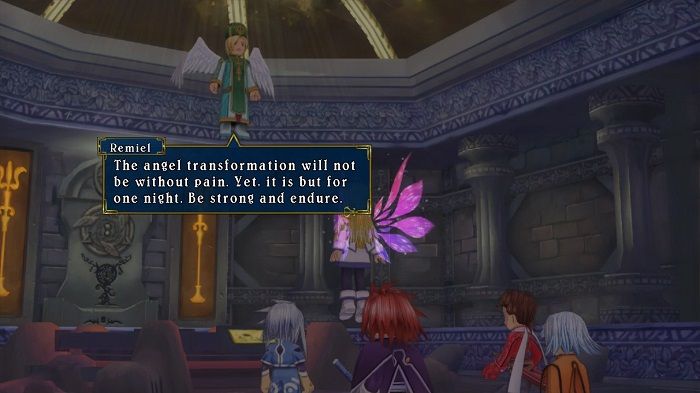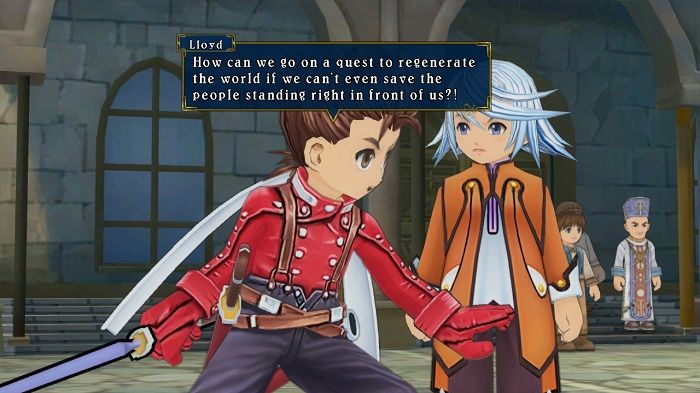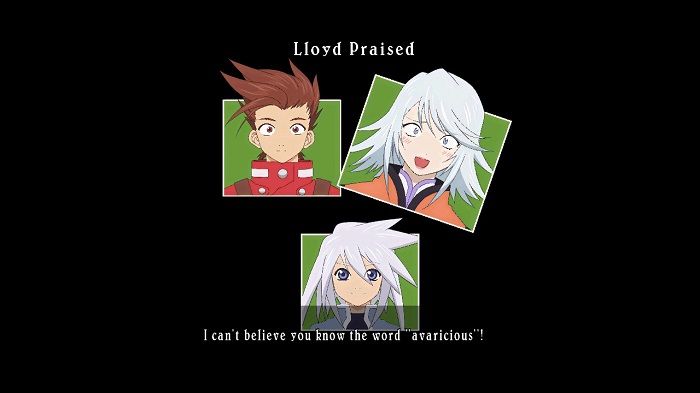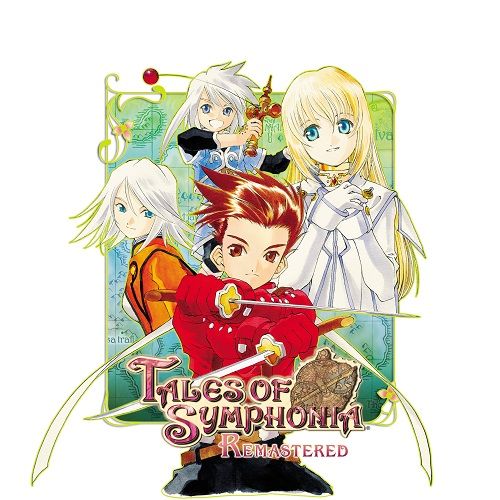Tales of Symphonia Remastered Review
Tales of Symphonia is a cult classic JRPG originally released for GameCube all the way back in 2004. It’s the fifth entry in the Tales Series of action JRPGs and the first 3D installment. Packed with hours of content and a slick cel-shaded art style, this game made quite a splash back in the day. But does it still hold up in 2023? Kinda, and mostly because the game was already good. This port has not done Tales of Symphonia many favors. Fortunately, a classic is always going to be a classic. This review may contain spoilers.
In the world of Sylvarant, the life-giving mana of the world is slowly being drained away. Tradition holds that the cruel Desians are taking it for their human ranches. To restore the mana and banish the Desians, the Chosen of Mana must go on a journey and pass the trials of the goddess Martel. Sweet and dutiful Colette is the Chosen, but her headstrong friend Lloyd Irving refuses to let her go alone. And his attempt to do something good causes a tragedy, he tries to atone by helping her.
The pair gather a motley crew of colorful JRPG characters as they set out to save the world. But it soon becomes clear that the prophecy they know doesn’t tell the full truth. And the situation with Sylvarant’s mana loss is more complex than it appears. What starts as a simple ‘save-the-world’ story rapidly becomes a complex web of lies, an examination of the cycle of abuse, and much more.
Who Saves the Chosen One?
Tales of Symphonia is one of those games that sets itself up as a specific kind of story. And then it goes on to subvert everything it constructed. So needless to say, the narrative is the main selling point here. If you aren’t into story-heavy JRPGs, do not play this. But if you are, you’re in for a treat.

Each Tales game focuses on a single element of standard fantasy—and JRPGs in particular. It then proceeds to lovingly examine and deconstruct that element. Tales of Symphonia attacks the whole concept of the chosen one. It argues that putting the world in one person’s hands isn’t good for anyone involved. Then it suggests that the player think seriously about why the world needs saving, to begin with. Who benefits from a world that’s constantly in peril? And can the greater good really excuse allowing those in front of you to suffer?
Adding onto this complex and intense plot are skits, short cutscenes triggered manually or by hitting certain in-game milestones. They feature simple animated graphics and range from short comedy sketches to in-depth character examinations. Half the fun of this game comes from getting to know the cast through their thoughts and interactions. This is good because the main plot moves pretty swiftly. Most JRPGs take forever to get going. Tales of Symphonia establishes that the world is in danger in the first 10 minutes. Then the protagonists’ classroom is attacked and they have to run for their lives. The Chosen’s destiny is here and it’s not taking prisoners.
Breaking the Cycle
Like the rest of the series, Tales of Symphonia features a real-time combat system. There are three battle modes: Auto, Semi-Auto, and Manual. Semi-Auto is the default, and more importantly, it automatically makes you jump when attacking flying enemies. Otherwise, the combat is pretty standard Tales fare. You have an enclosed battle arena, a number of foes to hit, and an array of skills to hit them with. It’s nice that characters can learn new skills mid-fight and begin using them immediately.

Each character has a distinct fighting style and requires a different approach to combat. You can experiment with different movesets and set strategies for the AI party members. The combat is definitely clunky now, but it’s still fun 20 years later. That’s more than plenty of classic JRPGs can say. Although this is a fairly linear action JRPG, there is some multiplayer. By this I mean, you can deploy four characters in combat at once. With enough controllers, up to four people can play through the game’s real-time battles. Everything else is still single-player.
There’s a fair bit of replay value, especially for completionists. Players can uncover plenty of collectibles, optional bosses, and titles. The decisions you make along the way—and the party members you grow closest to—will unlock new scenes. Since there are eight party members, that’s a sizeable number of hidden scenes. And each dungeon has its own aesthetic and puzzles that create a real sense of progression.
As I said, the game is mostly linear. However, you can do a number of side- and even some main story quests out of order. Some of these choices even impact the way the game progresses. On the other hand, the game features a largely fixed camera, which can make navigating around monsters stressful. Combat is also pretty easy, especially once you have a healer. So far, so good, right? Unfortunately, this is where the bad news starts.
Tales of Symphonia Deserved Better
Tales of Symphonia Remastered is a very bright and colorful game. That doesn’t keep it from touching on some very dark themes. This title doesn’t hesitate to show the suffering of Sylvarant. Slavery, human experimentation, and discrimination run rampant. Bad things happen to good people constantly. There’s an ever-present sense of fear and loss. This makes Lloyd’s stubborn idealism and faith in others stand out all the brighter. You can see why so many people depend on the Chosen to save them. At the same time, that dependency enables—and encourages—evil to flourish. Problem is, the graphics soften the impact.

I’m going to be honest: remaster or not, this game looks old. You can tell it’s a GameCube-era title. The good news is that whoever designed Tales of Symphonia knew what they were doing. Even if the graphics are antique, the game is still stylish. Kosuke Fujishima’s character designs are endearing and the cel-shaded 3D models have a retro charm. But I really wish Tales of Symphonia Remastered got a better visual update like Crisis Core -Final Fantasy VII- Reunion did. Imagining some of the hardest-hitting cutscenes with modern Tales Series graphics gives me chills.
More issues with this remaster: there are a lot of loading screens. Every time you enter a new area, one pops up. This plus the game being capped at 30 FPS during combat makes it look… not bad, exactly, but not good either. There are Japanese and English voices available. Unfortunately, skits aren’t voiced, which makes me very sad. In fact, most of the cutscenes aren’t voiced. This is a shame, as some of the voice acting is pretty good. And while Tales of Symphonia Remastered does include bonus items such as costumes, it doesn’t include the sequel. The 2013 PS3 remaster, Tales of Symphonia Chronicles, did offer both games in a single package. This makes the Switch release seem like a downgrade.

If you love JRPGs, you owe it to yourself to play Tales of Symphonia, and Tales of Symphonia Remastered is an easy way to do that. I’d even recommend this game to fans of retro gaming in general. I really wish I could recommend it to everyone. Unfortunately, the slightly clunky design and aged graphics make it hard for me to do that.
***Switch code provided by the publisher***
The Good
- Strong narrative
- Interesting themes
- Dungeon variety
- Fun skits
- Lots of content
The Bad
- Combat is decent at best
- Unpolished graphics
- Doesn’t include the sequel
- Sluggish FPS

